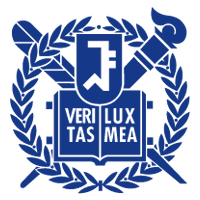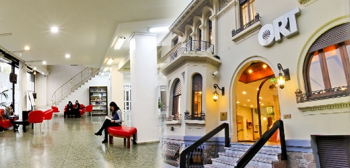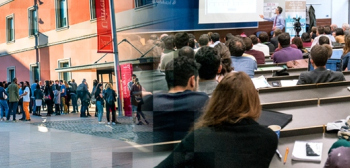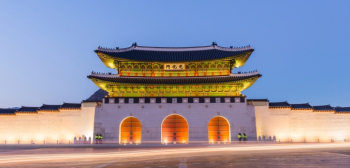首尔国立大学
About
Founded in 1946 by the merger of ten higher education institutions, Seoul National University enjoys a prestige unlike any other Korean university. It endured a tumultuous time during the mid-20th century, becoming one of Japan’s Imperial Universities during its occupation of Korea, and it was taken over by North Korea during the Korean War of the 1950s.
It’s experiencing happier times now though, with some 28,000 students enrolled on undergraduate, postgraduate and doctoral programs. There are also partnerships and exchange programs operated with over 700 academic institutions in 40 countries, including a general academic exchange program with the University of Pennsylvania, and double-degrees with the MIT Sloan School of Management and Yale School of Management.
Sixteen colleges of the university offer 83 undergraduate degree programs, while for master’s and doctoral programs there is a graduate school with 99 programs across five fields of studies. A recent study found that Seoul National University spends more on its students than any other large university in Korea.
The university has three campuses: the main Gwanak campus is located in southern Seoul, the medical campus is situated in the north-east of the city, while another campus lies 126km away in the city of Pyeongchang, the host city of the Winter Olympics.
There are dormitory rooms on campus, most of which are doubles with en-suite bathrooms and facilities, as well as studio apartments. Students live, work and socialize on campus, which contains all the facilities needed for a healthy and happy student life. There are plenty of cafeterias and snack bars on campus (though vegetarians may find the Korean diet a challenge), and a wide range of clubs, societies and activities designed to fill students’ social calendars and immerse foreign students in Korean culture.
Sporting activities, whether competitive or recreational, keep students in good shape mentally and physically, while arts and culture also rank highly on the list of what to do on campus, with students able to visit a world-class art gallery as well as attend concerts and recitals by anyone from the top K-pop sensation of the day to classically trained musicians.
About
Founded in 1946 by the merger of ten higher education institutions, Seoul National University enjoys a prestige unlike any other Korean university. It endured a tumultuous time during the mid-20th century, becoming one of Japan’s Imperial Universities during its occupation of Korea, and it was taken over by North Korea during the Korean War of the 1950s.
It’s experiencing happier times now though, with some 28,000 students enrolled on undergraduate, postgraduate and doctoral programs. There are also partnerships and exchange programs operated with over 700 academic institutions in 40 countries, including a general academic exchange program with the University of Pennsylvania, and double-degrees with the MIT Sloan School of Management and Yale School of Management.
Sixteen colleges of the university offer 83 undergraduate degree programs, while for master’s and doctoral programs there is a graduate school with 99 programs across five fields of studies. A recent study found that Seoul National University spends more on its students than any other large university in Korea.
The university has three campuses: the main Gwanak campus is located in southern Seoul, the medical campus is situated in the north-east of the city, while another campus lies 126km away in the city of Pyeongchang, the host city of the Winter Olympics.
There are dormitory rooms on campus, most of which are doubles with en-suite bathrooms and facilities, as well as studio apartments. Students live, work and socialize on campus, which contains all the facilities needed for a healthy and happy student life. There are plenty of cafeterias and snack bars on campus (though vegetarians may find the Korean diet a challenge), and a wide range of clubs, societies and activities designed to fill students’ social calendars and immerse foreign students in Korean culture.
Sporting activities, whether competitive or recreational, keep students in good shape mentally and physically, while arts and culture also rank highly on the list of what to do on campus, with students able to visit a world-class art gallery as well as attend concerts and recitals by anyone from the top K-pop sensation of the day to classically trained musicians.
University highlights
- 2012#37
- 2014#=35
- 2015#=31
- 2016#36
- 2017#35
- 2018#=36
- 2019#36
- 2020#37
- 2021#37
- 2022#36
- 2023#29
- 2024#41
- 2025#31
- 2026#=38
Campus locations
Gwanak Campus,
1 Gwanak-ro , Seoul , Gwanak , South Korea , 08826
Yeongeon Campus,
103 Daehak-ro , Yeongeon , Seoul , South Korea , 03080
Pyeongchang Campus,
1447, Pyeongchang-daero , Pyeongchang-gun , Gangwon-do , South Korea , 25354
Similar Universities
乌拉圭大学
Cuareim 1451, Montevideo
Barcelona Graduate School of Economics
Carrer de Ramon Trias Fargas 25, Barcelona
University West
Trollhättan
La Rochelle Business School - Excelia Group
102 rue de Coureilles - Les Minimes, La Rochelle

























